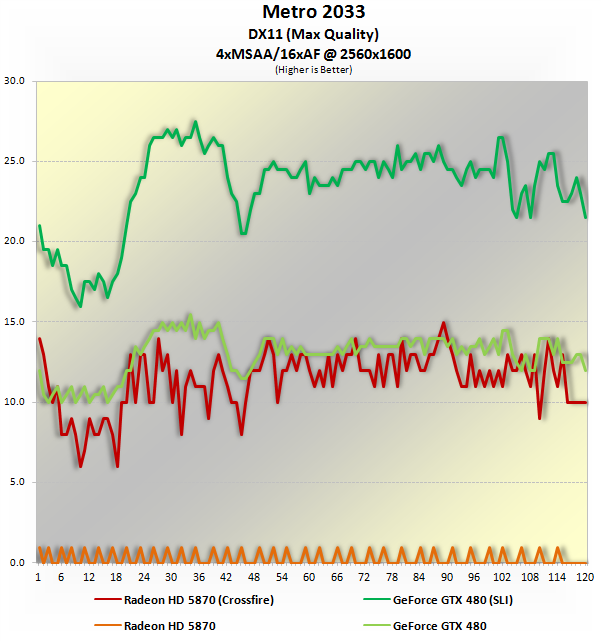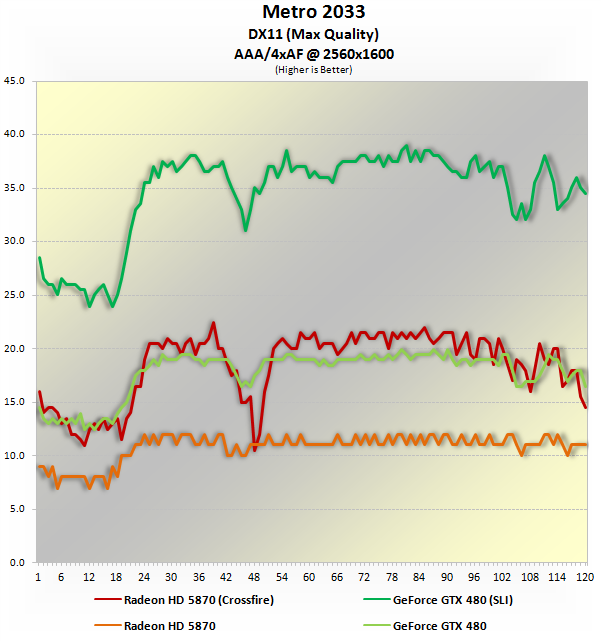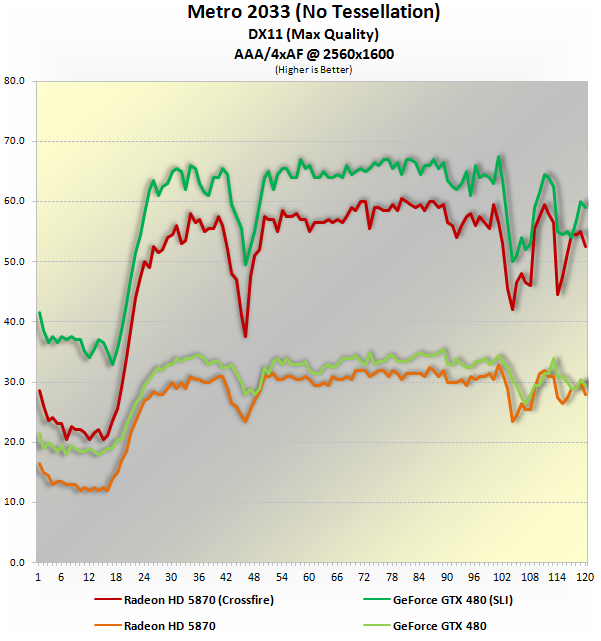Benchmarks: Metro 2033


For testing Metro 2033 we recorded the first two minutes of gameplay in chapter one, level "Chase". This is a pre-scripted tunnel traveling scene where you are riding a hand cart with a couple of other tunnel dwellers. For the first half of the scene you have visual movement control but you cannot shoot or move the character, which provides a consistent environment for testing. Halfway through the level you are forced to defend the hand cart and your disabled comrades from enemy mutants to provide some gunfire and movement.
As we found when testing with Crysis Warhead, a single Radeon HD 5870 is inadequate to take on Metro 2033 at this extreme resolution with 4xMSAA/16xAF enabled and DX11 features such as Tessellation also turned on. Adding a second Radeon HD 5870 graphics card saw the Crossfire configuration deliver a mere 11fps on average making it 2fps slower than a single GeForce GTX 480.
While the GeForce GTX 480 was considerably faster and the SLI setup delivered 77% more performance, at 23fps on average the end result was far from playable. As it stands Metro 2033 is simply too much at this resolution using maximum visual settings.


By reducing the AA/AF quality settings to their lowest possible values within Metro 2033 we see that a pair of Radeon HD 5870 graphics cards in Crossfire is only able to match the performance of a single GeForce GTX 480 graphics card which is naturally disappointing.
Adding a second GeForce GTX 480 graphics card boosted performance by 94% while adding a second Radeon HD 5870 only improved performance by a 64% margin. An average of 35fps and a minimum of 24fps will get you by, but we feel serious gamers are going to watch to see slightly higher frame rates to avoid any moments of lag.


Now with Tessellation disabled at 2560x1600 and the AA/AF quality settings still left at their lowest values we see frame rates greatly improve. Here a single Radeon HD 5870 is just 3fps slower than a single GeForce GTX 480 graphics card though both still struggled to deliver perfectly playable performance.
Adding in a second GeForce GTX 480 graphics card for the SLI configuration boosted performance dramatically as frame rates increased by 93% to an impressive 58fps with a minimum of 33fps. Adding a second Radeon on Crossfire also had a noticeable impact on performance with frame rates climbing 81% reaching 49fps with a minimum of 21fps.
Overall the GeForce GTX 480 SLI cards delivered 18% more performance than the Crossfire combo.